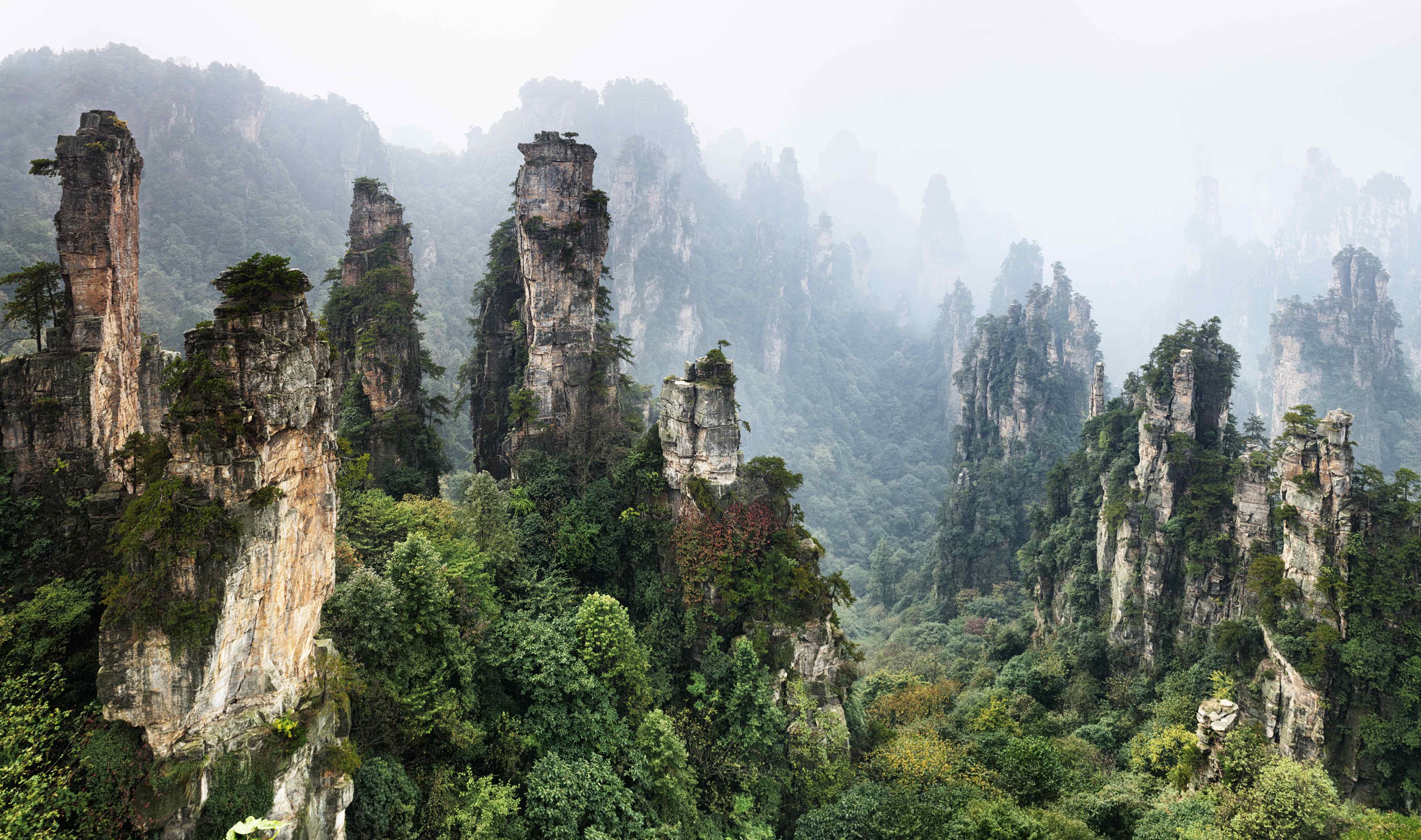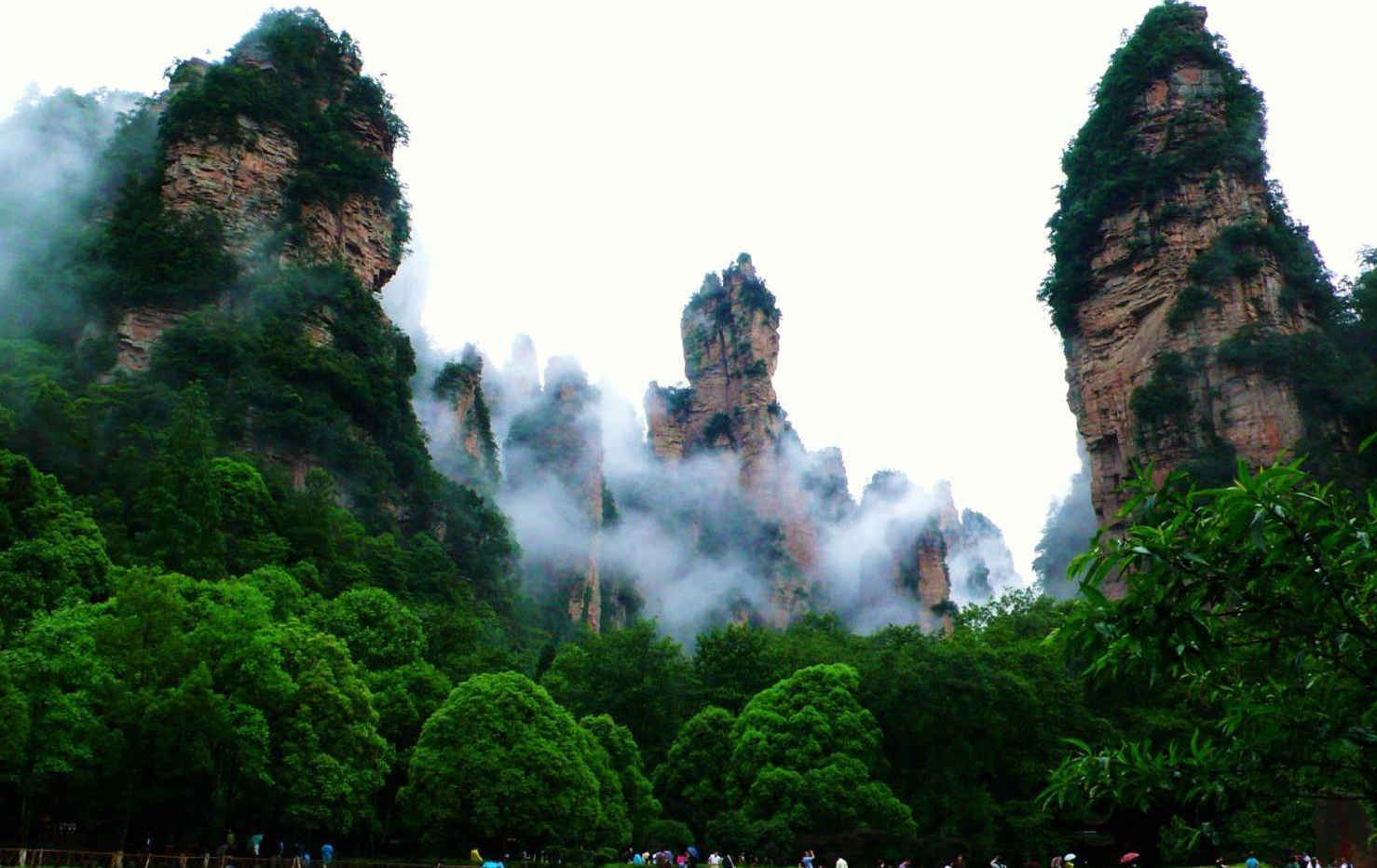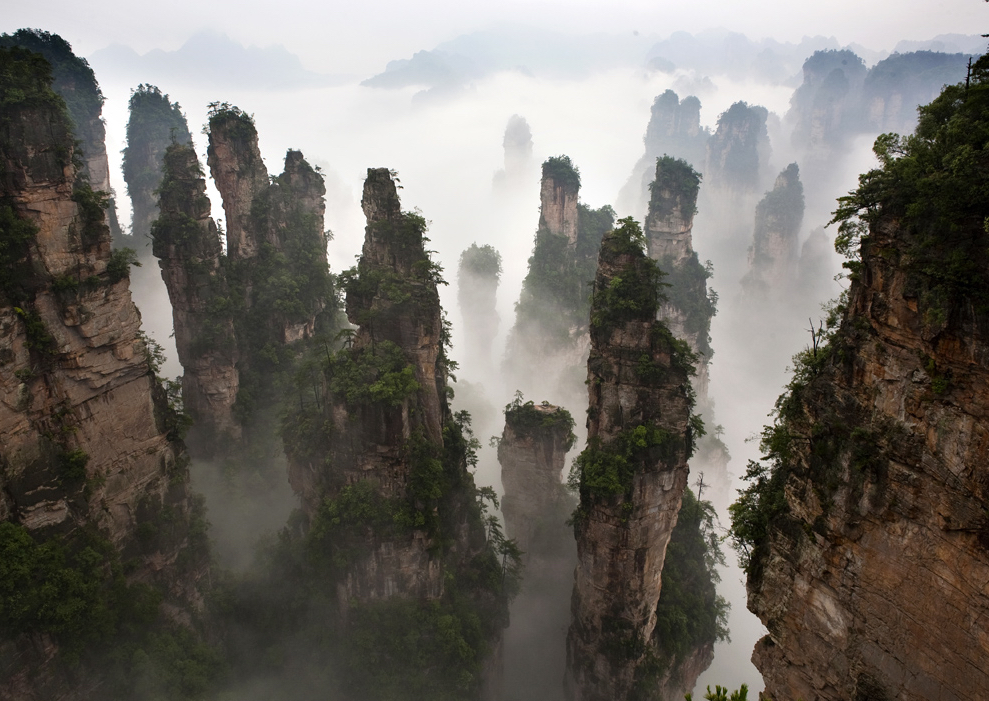
Environment
Is Bhutan’s earthquake hiatus over?

China’s Zhangjiajie UNESCO Global Geopark looks like a scene from Avatar, but it wasn’t created by computers; water, time and tectonics combined to create this other-worldly wonder
Published 29 April 2018
If you saw the movie Avatar on the big screen, you were more than likely awed by the 3-D spectacle of the planet Pandora.
For many, the most spectacular location on the fictional planet is the Hallelujah Mountains - giant, square-sided, floating rocks shrouded in mist, covered with rich vegetation and fast-flowing waterfalls dropping away into nothingness, around which flying reptiles and futuristic military aircraft do battle.

It’s breathtaking, pure fantasy, or is it?
Closer to home is the Zhangjiajie UNESCO Global Geopark in southern China. Here you will find giant, square-sided, pillar-like rock formations, shrouded in mist, covered with rich vegetation and fast-flowing waterfalls dropping away into nothingness. While they are firmly attached to the ground, their size and geometry give them an otherworldly appearance that seems to defy the laws of physics.
It’s the closest thing we have to Pandora on Earth.

Environment
Is Bhutan’s earthquake hiatus over?
There’s nothing magical about these pillars, but it’s only now that scientists are beginning to fully understand how and when these wonders were created. Forget CGI and ill-fitting 3-D glasses, to create Pandora on Earth you need tectonics, water and time.
A lot of time.
Designated a UNESCO World Heritage Site and UNESCO Global Geopark, Zhangjiajie is home to more than 3,000 stone pillars and peaks, measuring up to 350 metres tall, that form a “peak-forest” and now, 6 million visitors a year visit the park.
But its popularity is relatively new.
Professor He-Qing Huang, from the Institute of Geographic Sciences and Natural Resources Research in Beijing, says public – and scientific – interest in the park only took off in the last few decades.
“In 1979 it was made famous through a painting by Wu Guanzhong, a master of Chinese modern art, and now it is one of the most popular natural wonders in China,” he says.
In 2009, University of Melbourne geomorphologist Dr Jan-Hendrik May was a visiting research fellow at the Chinese Academy of Sciences. He and his host, Professor Huang, got to talking about the pillars. When it became apparent that no one really knew how these pillars formed, or how old they were, Dr May and Professor Huang decided to investigate.

A year later, they convened an international workshop in Zhangjiajie to assess exactly what knowledge already existed about the region and what lessons could be learnt from similar landforms around the world. From this meeting, a plan was formed to visit the park and uncover its secrets.
“The question that kept coming up, and that the local officials were very interested in, was ‘how old is the landscape? When did it start developing?’” says Dr May.
“Are these amazing pillars thousands of years, millions of years, or tens of millions of years old? Nobody knew that.”

Sciences & Technology
Sinkholes: What on earth’s happening?
The first step was to collect rocks from different levels of the pillars. But without the use of the agile, dragon-like banshees and leonopteryx that Sully and Neytiri use to navigate their way around the mountains in the movie, Dr May and Professor Huang faced a major challenge: how do you get rock samples from the vertical faces of these huge pillars?
Neither were keen to venture down the side of 300 metre vertical drop. But luckily some locals were on hand to help out.
“There are people who have lived in this place forever, and they do shows where they dance on the vertical walls,” says Dr May.
“We asked them if they could sample some of the rocks from the vertical walls. I have vertigo so even watching the guys sampling made me nervous.”
These samples were then sent to the Australian Nuclear Science and Technology Organisation where they were analysed for cosmogenic nuclides. These are mineral isotopes that are created by cosmic rays that constantly bombard the Earth.
“Cosmic rays interact very strongly with the rocks close to the surface, but exponentially less so deeper into the rock,” says Dr May.
“We can calculate the rate of how fast these nuclides accumulate, then measure the concentration in our rocks, and from there we can directly infer the time of exposure. That’s what we call surface exposure dating, or SED.”

The researchers calculated the maximum erosion rate at the top of the stone walls at around 2.5 millimetres every thousand years. At the bottom, where rivers cut through the landscape, the erosion is faster, but still only 122 millimetres every thousand years, whereas the vertical pillar walls disintegrate and retreat at intermediate rates.
“This doesn’t sound like much, but it adds up to 48 metres of pretty solid rock being removed from the pillars every million years,” says Dr May.
The rocks of Zhangjiajie were formed from sand that was deposited in a shallow sea around 400 million years ago.

Sciences & Technology
The not-so-plain Nullarbor
Then, over the next 350 million years or so, they were repeatedly strained and fractured by tectonic forces. This fracturing resulted in a neat, grid-like pattern, which can still be seen in many of the pillars today.
Much later, when India began to collide with Asia around 30 million years ago, the sandstone rocks of Zhangjiajie started their slow rise to become a plateau - water got into these fractures, where it has been slowly eroding the rocks ever since.
Professor Huang says the pillars’ remarkable shapes are mainly a result of three factors.
“The sandstone is very strong, being 95 percent quartz. The vertical joints are well developed, allowing a deep incision by river flow. And thirdly, the region has low tectonic activity, and so the pillars of almost horizontal rock stand for a very long time” he says.
To work out the age of the landscape, the researchers had to calculate the total volume of rock in the plateau before the pillars started forming, then use 3-D mapping to calculate the amount of remaining rock.
“If you know the rate that all of these surfaces erode in the landscape, and you calculate the volume of erosion, you can basically convert these rates into a time,” says Dr May.

“Our calculations suggest that the peak-forest started forming in the Pliocene, about 5 million years ago, though the tallest pillars in the centre of the park are likely younger than this.”
The first Avatar sequel is due to hit our screens in 2020, but Pandora on Earth is with us now, and it seems, for millions of years to come.
The research was featured on the front cover of the March issue of the journal Earth Surface Processes and Landforms, and was financially supported by the Joint Research Center for Zhangjiajie Geomorphology, Zhangjiajie UNESCO Global Geopark and a Young Scientist Fellowship to Dr May from the Chinese Academy of Sciences.
Banner: Getty Images